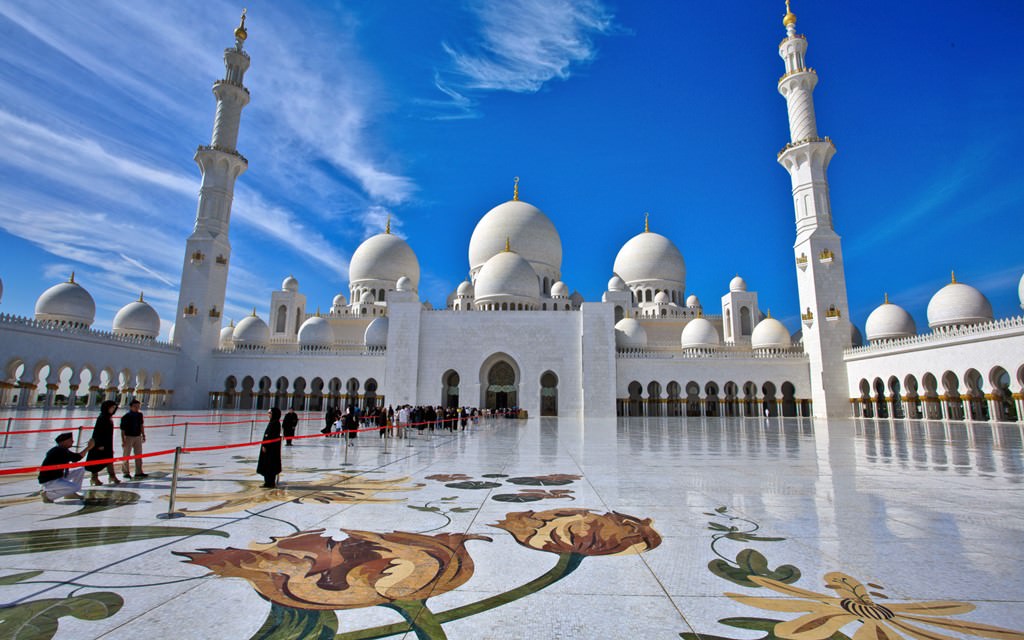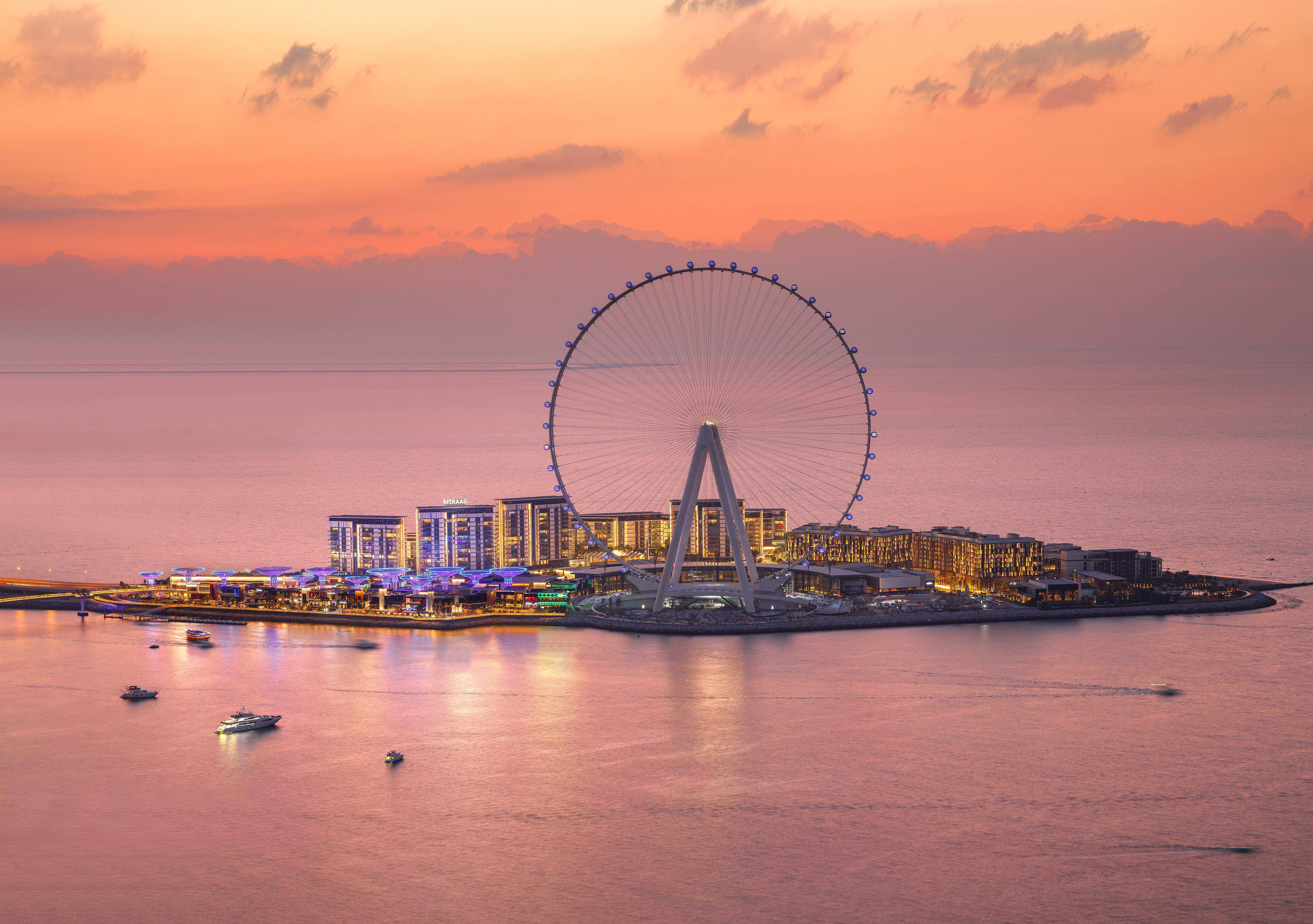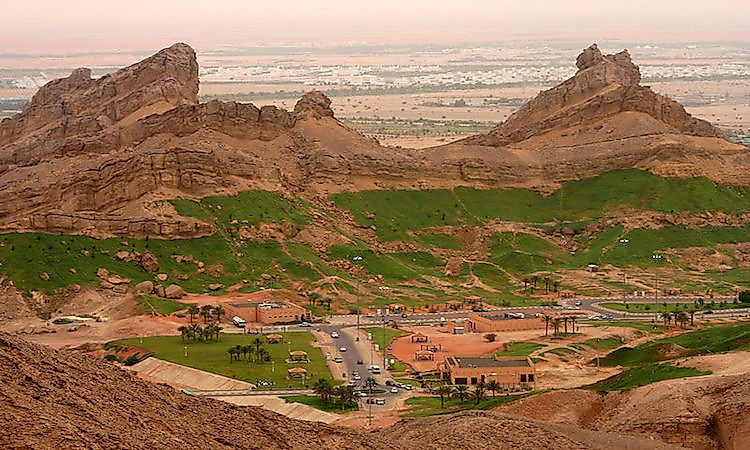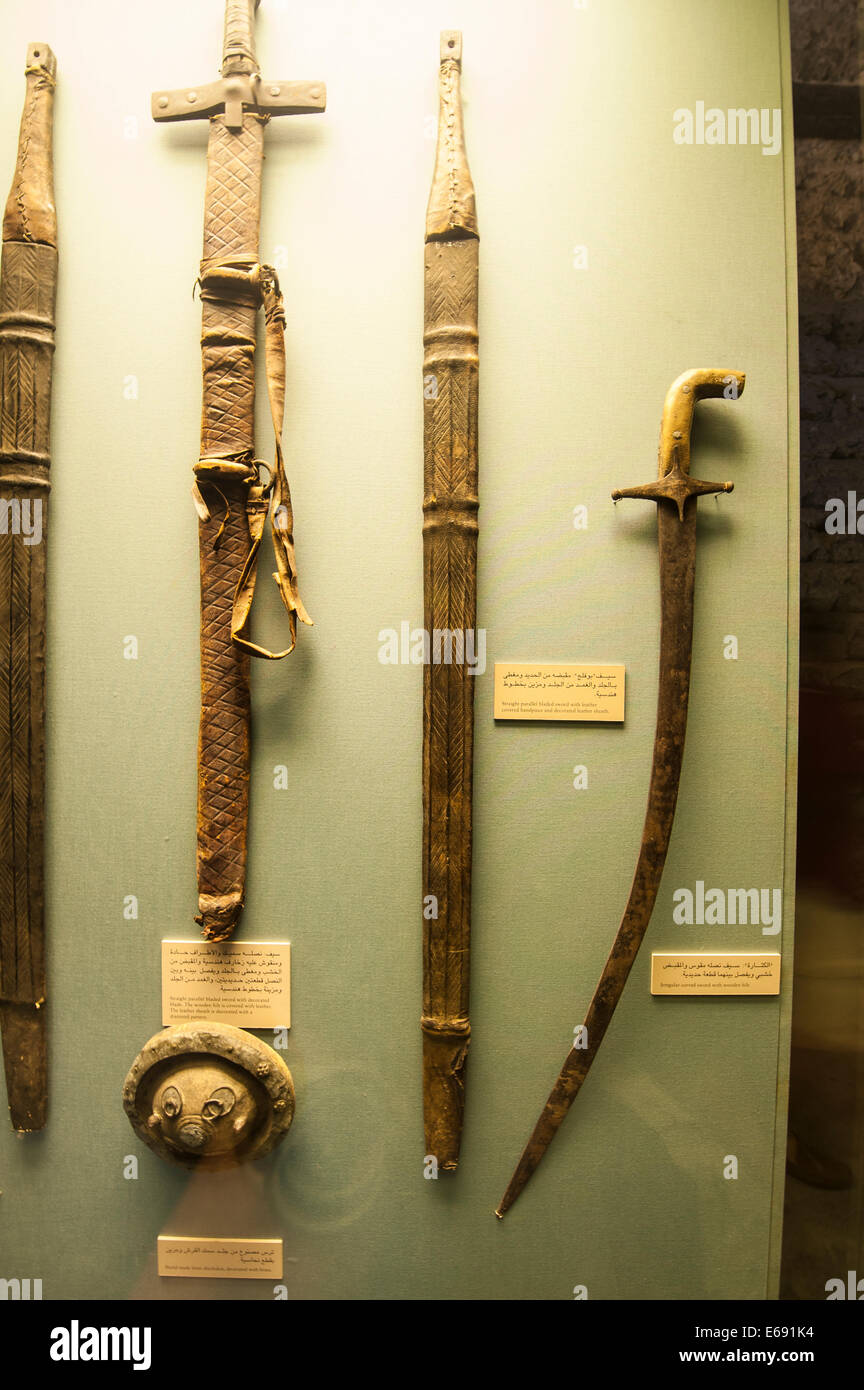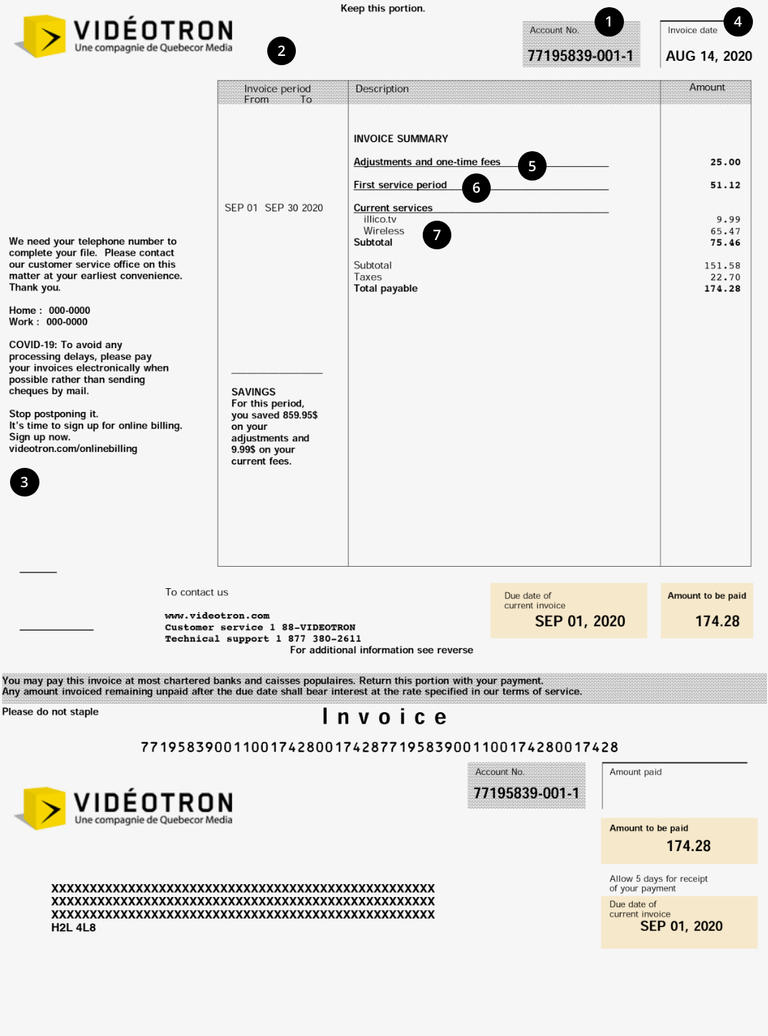Administratively, the UAE is a loose federation of seven emirates, each with its own ruler. The pace at which local government in each emirate evolves from traditional to modern is set primarily by the ruler. Under the provisional constitution of 1971, each emirate reserves considerable powers, including control over mineral rights and revenues. President Shaikh Zayyed bin Sultan Al Nahyyan has been president of the UAE since it was founded.
The UAE is a country of immigrants; of the 10.4 million people living in the country in 2019, nearly 90 percent were foreign-born. Today, ethnic Emeritus constitute only 11 per- cent of the population. Most of the migration stems from the ongoing construction boom and high demand for labor in Dubai and Abu Dhabi.
Indians and Bangladeshis, seek- ing these higher-paying jobs, now constitute 38 and 10 per- cent of the population, respectively. Islam is the official religion of the country, and Arabic is the official language. Most domestic power resides with each emirate's emir , while foreign affairs and budgeting are decided by the Federal Supreme Council.
The Federal Supreme Council consists of the seven emirs, with the emir of Abu Dhabi serving as president and the emir of Dubai serving as prime minister and vice president. An additional legislative body, called the Federal National Council, consists of 40 emirates that function in a largely advisory role. Half of the Federal National Council is chosen by the emirs, while the other half is elected by a limited number of chosen citizens. Because Abu Dhabi is the largest emirate in size and population, and possesses the most oil resources, it plays a dominant role in the federation's political and economic affairs.
A small fishing and pearling settlement before the discovery of oil, Abu Dhabi city has grown since independence into a modern capital with broad, tree-lined streets amid rows of skyscrapers lining the Corniche. The sedate character of the city is shaped by the dominant presence of central government institutions, financial institutions, and oil companies. In contrast, the mood in Dubai is more socially vibrant, economically open and cosmopolitan. Bustling markets, an active shipping trade, and a lively sporting and entertainment calendar put Dubai in the region's economic and social fast lane.
In both cities, a walk downtown reveals the large proportion of foreigners working in the country. There is no social security law in the UAE, but many welfare benefits are available to citizens, among them free hospital treatment and medical care and subsidies for education. Relief for any domestic catastrophe is provided from a disaster fund.
Which Is The Fourth Largest Emirate In Uae If the father of a family is unable to work because of illness, disability, or old age, he receives help under the National Assistance Law; should he die or divorce his wife, the woman's future is secured. UAE nationals receive many government services, including health care, water, and electricity, free of charge. Islam is the official religion and Arabic is the official language. The United Arab Emirates' oil and natural gas reserves are the world's sixth and seventh-largest, respectively. Zayed bin Sultan Al Nahyan, ruler of Abu Dhabi and the country's first president, oversaw the development of the Emirates by investing oil revenues into healthcare, education, and infrastructure. The United Arab Emirates has the most diversified economy among the members of the Gulf Cooperation Council.
In the 21st century, the country has become less reliant on oil and gas, and is economically focusing on tourism and business. The government does not levy income tax, although there is a corporate tax in place and a 5% value-added tax was established in 2018. This is a major way of distributing oil wealth among the national population.
The immigrant population also benefits to some extent, particularly in regard to medical care. Much of the work force in the UAE are foreign expatriates - hence the country's population makeup being so diverse, with Emirati citizens being a minority in their own country. All Emirati citizens receive profit sharing cheques from the government and mostly opt to work in the government sector.
Migrant workers from the Indian Subcontinent and the Philippines are mostly employed in the service and construction industries for low wages. Many mid-level jobs are filled by expats and Emirati nationals who work in the private sector, in addition to expats who work in high-skilled and managerial positions and typically enjoy a very good standard of living. If you're interested in working in the UAE there are opportunities in oil and gas, banking, engineering and education.
The public school system in Abu Dhabi is hiring a large numbers of English-language teachers from Western countries. These teaching jobs in the UAE are accessible through official recruiters of the Abu Dhabi Education Council. Ras al-Khaimah is situated to the northern part of the UAE, bordering part of Oman's territory, the Musandam. The population of this emirate is 205,000 people, and the Emirati citizens are the largest group. Ras al-Khaimah does not have any oil, and it has, therefore, focused on advancing its industrial sector.
The primary economic areas of Khaimah include real estate, tourism, building materials, service sector, and agriculture. The most recognized types of attraction in this emirate include shopping, nature, parks, water, and amusement parks. The capital city of this emirate is also referred to as Ras al-Khaimah and it is a home to most of the citizens of Ras al-Khaimah emirate. Human occupation has been traced back to the emergence of anatomically modern humans from Africa some 124,000 BCE through finds at the Faya-2 site in Mleiha, Sharjah.
Burial sites dating back to the Neolithic Age and the Bronze Age include the oldest known such inland site at Jebel Buhais. Known as Magan to the Sumerians, the area was home to a prosperous Bronze Age trading culture during the Umm Al Nar period which traded between the Indus Valley, Bahrain and Mesopotamia as well as Iran, Bactria and the Levant. The ensuing Wadi Suq period and three Iron Ages saw the emergence of nomadism as well as the development of water management and irrigation systems supporting human settlement in both the coast and interior. The Islamic age of the UAE dates back to the expulsion of the Sasanians and the subsequent Battle of Dibba. The UAE' history of trade led to the emergence of Julfar, in the present-day emirate of Ras Al Khaimah, as a regional trading and maritime hub in the area. The maritime dominance of the Persian Gulf by Emirati traders led to conflicts with European powers, including the Portuguese Empire and the British Empire.
The commercial production of oil triggered rapid population growth. This resulted from improvements in diet, health care, and living standards, as well as the importation on a large scale of male foreign laborers. The 2005 statistics show that the population has gone up many folds, causing a significant demographic shift. The U.S. State Department calculates the total population as 4.32 million, 85 percent of which is made up of immigrants while natives count for remaining 15 percent.
About 88 percent of the population is urban, prompting some analysts to describe the nation as a federation of city states. The remainder lives in tiny towns scattered throughout the country or in many of the desert oilfield camps. The population has an unnatural sex ratio with 2.743 men to every woman—the highest in the world, although similar to other gulf states. Life expectancy at birth for the total population was 75.24 years in 2005.
Administratively, the U.A.E. is a loose federation of seven emirates, each with its own ruler. The constitution established the positions of President and Vice President, each serving 5-year terms; a Council of Ministers, led by a Prime Minister ; a supreme council of rulers; and a 40-member Federal National Council . The FNC is a consultative body with half its members appointed by the emirate rulers and half elected. Social development efforts, most particularly the nurturing of the country's citizens or "human capital," have been a priority of the UAE government since the early years of the federation.
Immense resources have been applied to provide modern social and economic development infrastructure in education, health, and social welfare. Dubai is the most populous and the largest emirate in the UAE with approximately 2,502,715 people. Notably, it is the most progressive emirate among the seven emirates. Dubai is classified as an alpha city due to its strong economy.
Despite being a desert, the country has managed to utilize its resources and according to the 2015 statistics, it has an annual GDP of 105.6 billion USD. Unlike its neighboring emirates such as Abu Dhabi, the oil reserves of Dubai have been exhausted; oil contributes only 2 % of the total GDP of this emirate. Although it started as a port, Dubai has developed into a luxurious emirate that is home to the world's tallest building. The education system through secondary level is monitored by the Ministry of Education in all emirates except Abu Dhabi, where it falls under the authority of the Abu Dhabi Education Council. It consists of primary schools, middle schools and high schools. The public schools are government-funded and the curriculum is created to match the United Arab Emirates' development goals.
The medium of instruction in the public school is Arabic with emphasis on English as a second language. There are also many private schools which are internationally accredited. Public schools in the country are free for citizens of the UAE, while the fees for private schools vary.
The United Arab Emirates is a federation of seven independent emirates, each with its own ruler. The federal government is a constitutional republic, headed by a president and council of ministers. Islamic ideals and beliefs provide the conservative foundation of the country's customs, laws and practices. The UAE is a modern, developed country, and tourist facilities are widely available. Americans coming to the UAE will find a small country in the midst of rapid social and economic transformation. The seven emirates are each distinct in resources and character, ranging from the poorer, smaller emirates of the north to the dynamic commercial center of Dubai and the staid, oil-rich Abu Dhabi.
These last two cities are pockets of wealth where five-star hotels feature cuisine from around the world and shops sell expensive fashions from Europe and electronics from Japan. Despite outward appearances like this, however, the UAE is still a developing country in important respects. For example, while the telephone system has the latest technologies, public hospitals are for the most part far below standard in many areas.
And while UAE citizens control the country, it is foreign nationals from places like New Delhi, Dhaka, Manila, and Cairo who actually sit behind cash registers, build skyscrapers, and repair plumbing. In this sense, since the majority of the country's residents are foreigners, it is easy for foreigners to feel at home. Zayid has used his political skills and Abu Dhabi's oil wealth to keep the federation together through times of crisis which strained the sometimes tenuous ties of the 7 emirates. Zayid has been most successful in mediating Abu Dhabi's rivalry with Dubai and convincing Dubai's ruling family to take on key positions in the UAE federal government. In recent years, however, Zayid's advanced age and poor health have forced him to delegate greater responsibility to his eldest son, Shaykh Khalifa.
The region "entered" the 20th century in the 1950s with the discovery of oil in Abu Dhabi and subsequent discoveries of oil in Dubai and Sharjah in the 1960s. Following Britain's withdrawal from the Trucial Coast in 1971, the UAE became an independent state composed of 7 of the original 9 emirates. The other 2 emirates, Bahrain and Qatar, became separate independent states.
Abu Dhabi, Dubai, and to a lesser extent, Sharjah, used the proceeds from oil sales to build modern, urban societies. The crown jewel of this project is the Jebel Ali Free Zone , which opened in 1985 and now boasts 1,600 international companies from over 70 different nations. Sharjah too has sought to broaden its economy by investing in manufacturing. Since the early 1980s, Abu Dhabi has invested billions of dollars in nonoil industries, including manufacturing, services, and agriculture. After the Gulf War, the UAE used the glut in the world arms industry to mandate an "offsets" program requiring all firms selling weapons to the federation to invest in its non-oil related industries. The use of advanced educational technology is also being emphasized at the postsecondary level.
In keeping with its present educational and national economic development and diversification strategy, the UAE University is seeking to establish an internationally prominent information technology college in Al Ain. Requiring an estimated US$62 million, the UAEU College of Information Technology will be an ultra modern facility located inside the new "University Town" that is planned for Al Maqam. The new area will consolidate various university facilities currently scattered around the city. The curriculum will encompass a total of nine degree programs, including software engineering, information systems, telecommunications, educational technology, e-commerce, and information security.
Upon completion the IT College anticipates an initial enrollment capacity of 1,300 students, 300 males and 1,000 females. The capacity will be gradually increased to a total of 3,000, 1,200 male and 1,800 female students. The Dubai Emirate Government has also granted land to Zayed University in the large Dubai Internet City complex to enable it to establish an IT facility in premises to be provided by the Zone Authority. The Higher Colleges of Technology were established in 1988, initially offering two-year applied and vocational programs. These colleges are designed to prepare nationals for professional and technological careers in both government and private sectors. Since their foundation, the colleges have grown dramatically, with staff and students increasing by about 30 percent each year.
As of 2001, over 10,000 students are taking advantage of the educational opportunities offered by HCT campuses around the country. The HCT are also embarking on an extensive program of off-campus instruction. UAEU, Zayed University, the Higher Colleges, and other federally funded institutions are tuition free. Generous grants are also available for those wishing to study abroad, most of whom are males pursuing degrees in applied and technical fields. In 1998, over 1000 UAE students studied abroad in 32 countries with UAE government grants. Many families use their own resources to provide for their son's undergraduate education in the United States, often in a business or commercial field.
Education, as routinely indicated in government policy, is considered a key element in promoting the necessary skills for social and economic development. As in other countries, priority was given to the needs of school-aged children. Increased attention is now being given nontraditional student populations.
The Ministry of Education and Youth , the Ministry of Higher Education and Scientific Research , and higher-level federal authorities routinely promulgate laws and regulations concerning education. Some important laws are included in discussing particular features of education in the UAE. Today, the UAE provides nearly universal access to electricity and water to its citizens. The country has invested in modern technological infrastructure and large, state-of-the-art airports to attract foreign investment. Both Dubai and Abu Dhabi have become international destinations for luxury shopping, lively nightlife, and exotic attractions.
Despite these advancements, human rights issues still remain a concern for many in the international community. Women are subject to discriminatory laws in both employment and their personal lives, and apostasy from Islam and homosexuality remain punishable by death. Population estimates of the country in 2000 ranged from 2.6 to nearly 3 million. It serves as the financial, transportation, and communications center of a major petroleum-producing area.












